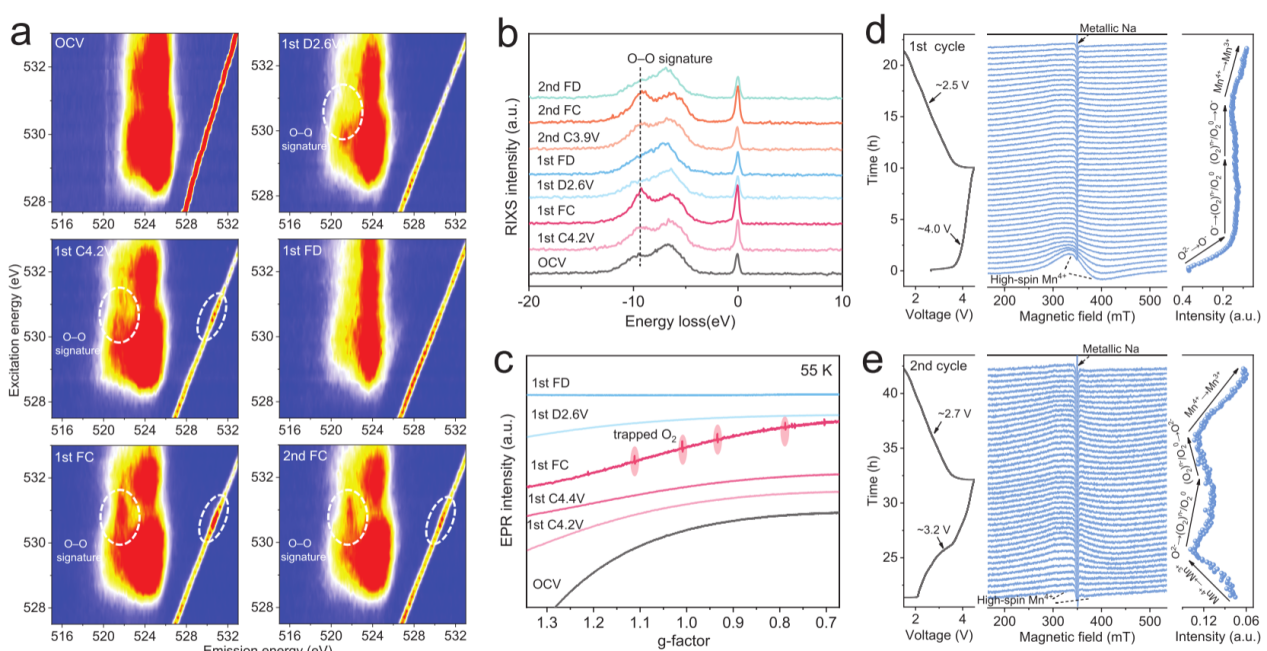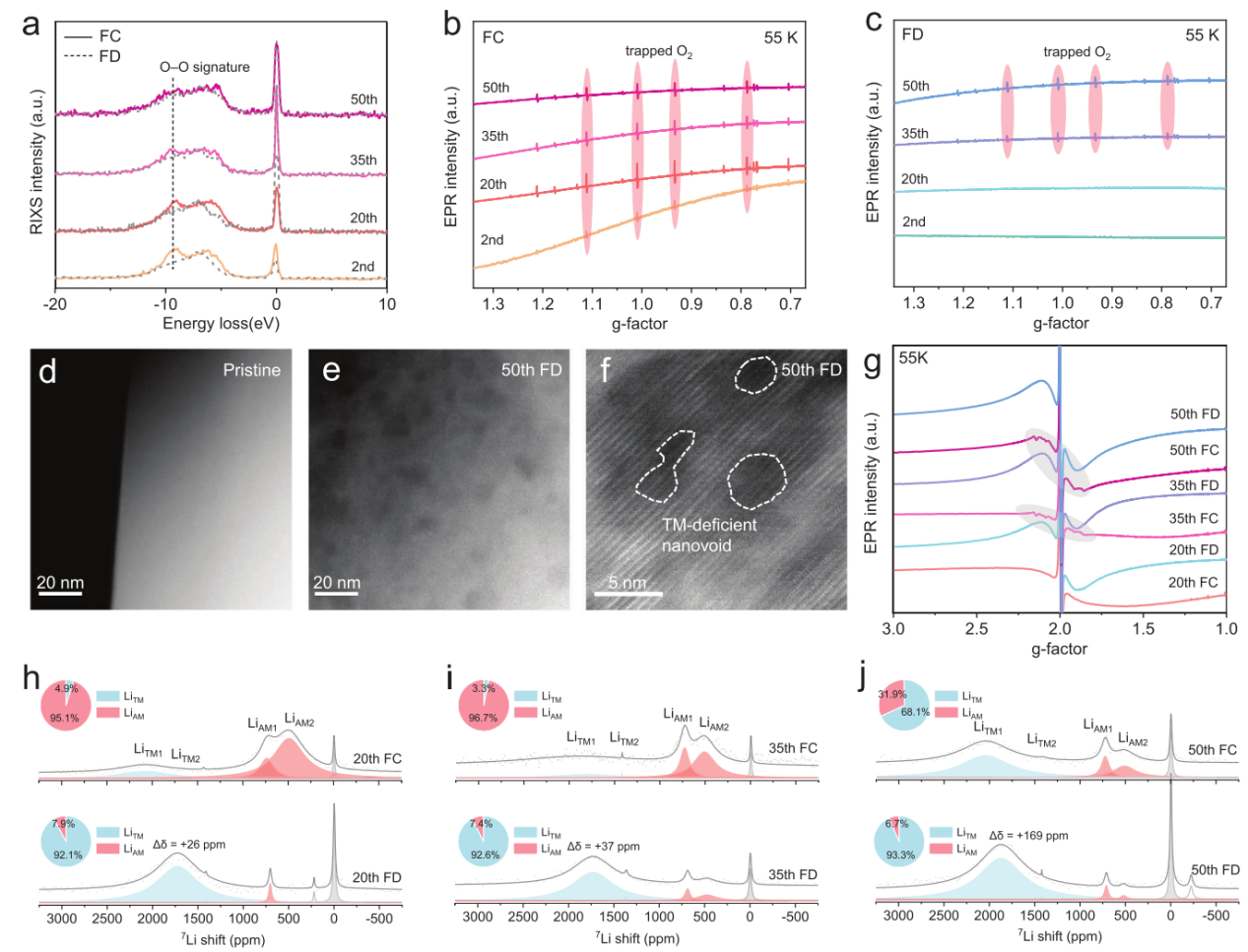
A research team led by Prof. LI Chao from East China Normal University has uncovered the origin of voltage decay in P2-type layered oxide cathodes recently. Using electron paramagnetic resonance (EPR) spectroscopy at the Steady-State Strong Magnetic Field Facility (SHMFF), the Hefei Institutes of Physical Science of the Chinese Academy of Science, the team tracked the dynamic evolution of oxygen species and clarified their direct role in structural degradation.
The findings, published in Advanced Energy Materials, provide new guidance for designing more stable sodium-ion cathodes.
P2-type sodium layered oxides (NaxAyTM1-yO2) are long considered stable for anion redox reactions compared to Li-rich O3-type counterparts, with suppressed voltage decay. However, the team observed significant voltage decay in the high Na-content P2-type Na0.8Li0.26Mn0.74O2 during cycling—an anomaly unexplainable by existing theories.
The researchers identified a clear sequence of oxygen transformations upon charging, eventually leading to the formation of molecular O₂. While early cycles showed that this oxygen could still be reduced during discharge, with continued cycling a growing fraction of O₂ remained trapped in the discharged state. This irreversible accumulation was pinpointed as the primary driver of voltage decay and capacity loss.
In this study, EPR proved critical as it enabled non-invasive monitoring of oxygen redox behavior and revealed how reactive oxygen intermediates gradually evolve and accumulate during cycling.EPR further exposed local structural changes: signals associated with spin interactions between manganese and oxidized oxygen became more pronounced with cycling, consistent with the development of Mn-rich and Li-rich domains. These segregation effects, exacerbated by unreduced O₂, aggravated the performance degradation.
Importantly, the team also explained why high sodium-content cathodes behave differently from their low sodium-content counterparts. In high-Na materials, insufficient interlayer spacing allows migration and vacancy growth, making them vulnerable to oxygen trapping. By contrast, low-Na cathodes with larger spacing remain stable and show no evidence of trapped oxygen.
This study highlights the unique value of EPR in battery research and suggest that bulk modification strategies are key to mitigating voltage decay and developing high-performance cathodes for next-generation batteries, according to the team.

Evolution of intermediate oxygen species during the activation cycles. (Image by LI Chao)

Evolution of intermediate oxygen species over cycling and the accompanying structural rearrangements. (Image by LI Chao)